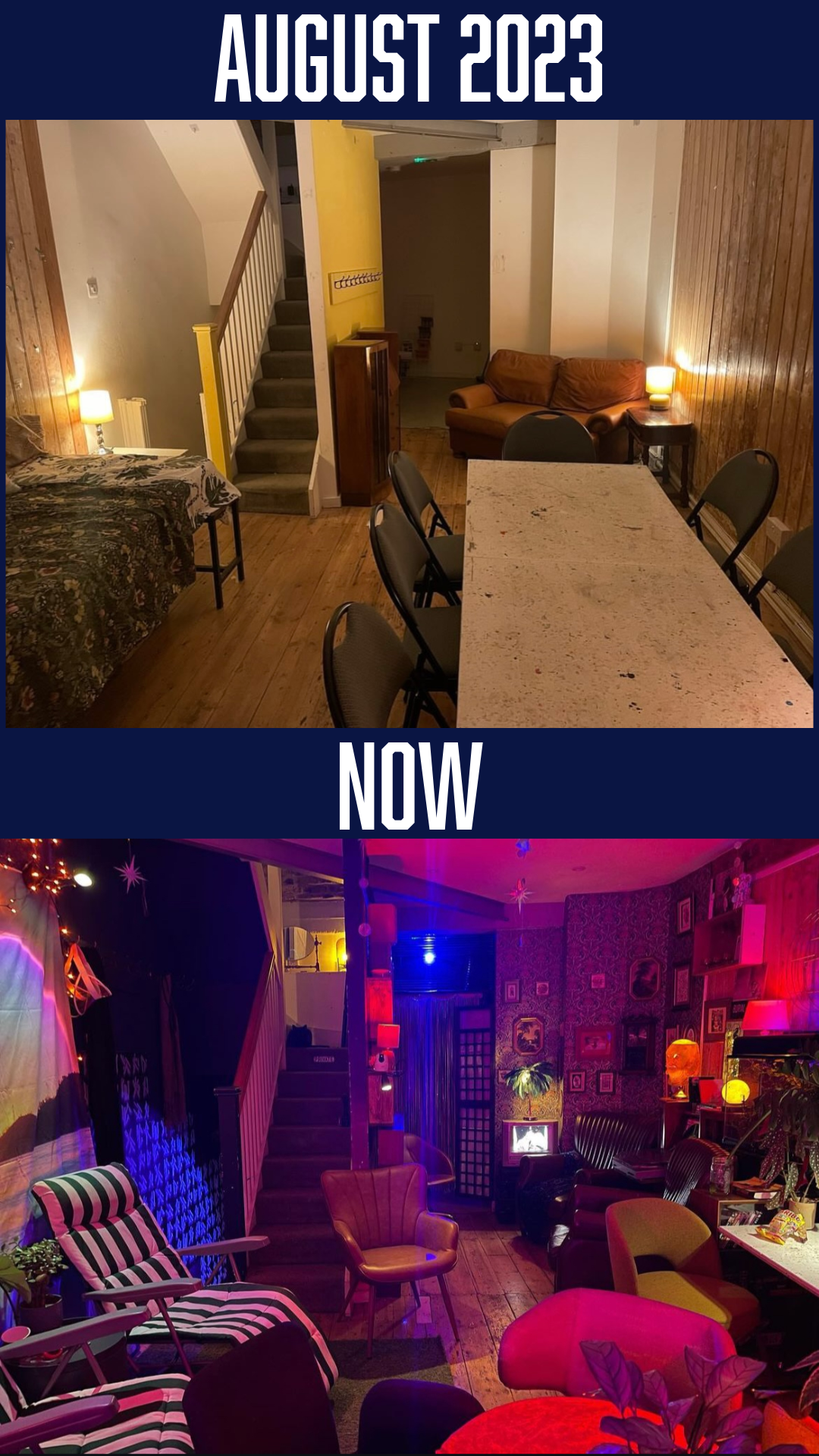Night Cafe at 1 year
The London Night Cafe is a small “thirdspace” project located in the Aldgate neighborhood of central London—a hop and a skip from Aldgate, Aldgate East and Liverpool Street stations.The Night Cafe is open to the public Sunday to Friday until 3 am or later, and also is the home of a variety of private events, from reading groups to ENM socials to synthesizer meet-ups to silent reading parties. The space itself is a neon, dazzling, “neodecadent” composition of aesthetically-diverse vignettes: an “indoor beach,” an intimate ball pit surrounded by tinsel and sparkling lights; a sumptuous, plush, dimly-lit, multi-tiered “cuddle puddle” that 15 people can lay down on at once; a nostalgic “fireside” corner occupied by a couple of wingback leather chairs flanked by nostalgic wall decor; a “hacker corner,” full of vintage monitors, cables, and audio equipment; a bathroom that sounds, looks and feels like a thunderstorm. As first-time visitors constantly tell me (especially on slower nights), the place does not seem real.
On any given night, you might see a group of friends quietly mingling in the cozy, furry lounge; a couple on a date, half-immersed in the ball pit, their faces illuminated from hundreds of distinct angles as the glittery strobe lights surrounding them sparkle; two people having a miniature rave in the thunderstorm-themed bathroom; someone sitting at a neon red-flanked desk surrounded by screens and vintage audio equipment, making electronic music on their laptop; two or three graduate students scattered around the corners of the ground floor, tapping away at their respective dissertations; a hushed conversation in the window seat; a sleepy night worker, sipping coffee and dozing off by the flickering VHS “fireplace.” Other nights, the space is more sparsely-attended—a quiet, glittering gem in the desolate nightscape.
One year ago, I rolled up the security shutter and switched on the open sign for the London Night Cafe, bracing myself for a torrential flood of guests eager to finally have a neon, cyberpunk, utopian, open-late chill space in the gritty heart of the East End. . . . Two days later, on our third day of being open, one guest finally came. And six days later, a second guest came. I had done zero marketing, naïvely believing the mantra “if you build it, they will come.” This proved true, but not immediately. Despite being open until 3 am every single night, it was not until November that we would consistently start seeing guests. In the interceding days and weeks, I myself wondered if the place I started was actually real, or just a half-baked delusion. I’m grateful to all of my friends who hung around, kept me company, and made the place feel alive even when there were no guests coming. Today, the place feels real—not in the sense that it no longer appears like a mirage in the night, but in the sense that it really exists in the “psychogeography” and calendars of thousands of Londoners.
For years, I have been dreaming of cities that are more porous—cities full of little pockets and nooks that are each charged with aesthetic intensity, where subcultures and scenes and can bubble away, and where plots can unfold. I’ve dreamed of cities that are composed of many little worlds—each one a “pluriverse” of completely different ways of being and thinking. This “neodecadent” vision of the city has simultaneously haunted and inspired me since I began studying cities and architecture, spending time in utopian subcultures, and reading social theory. In the 1960s, the avant-garde group the Situationists urged urban political movements to locate the “beach beneath the streets”—in other words, to tap into the latent utopian potential of everyday life, and to reimagine and remake our cities and our society to make it more just, more beautiful, and more interesting. Decades later, Mark Fisher wrote about a concept he called “the weird”: the act of situating unexpected scenes within the ordinary world, in order to open up the imagination towards greater possibilities. By presenting a portal into the unexpected or unfamiliar, and locating the threshold for this encounter within the ordinary world, the weird destabilizes the hegemonic power of the normal. An encounter with the weird should saturate the entire ordinary world with extraordinary potential. The Night Cafe, with its colorful interior, futuristic-yet-cozy atmosphere, comfortable seating, utopian books and clever, creative clientele, is intended to be a little prefigurative taste of the yet-to-exist neodecadent city, and the society that might create it. Its colorful, flickering facade gapes out onto the shuttered, darkened, inner-city landscape of Aldgate—a “weird” portal into something completely different from its surroundings.
The Night Cafe builds upon a series of past projects and prototypes—each with their own unique sources of inspiration: a jungle room in New Haven; a ludicrous scheme to create an app for sharing people’s backyards; a series of “urban hacking” events that transformed alleyways into decadent dinner parties; a multi-story hammock structure at Burning Man festival and its floating equivalent, Ephemerisle; the communal houses in San Francisco—particularly the late Red Victorian; and a neon cyberpunk trailer that I lived in and worked on for the five years I was doing my PhD in Cambridge. Each of these has been a source of inspiration and has presented opportunities to experiment with spatial and social configurations. Spatial experimentation is clearly a core part of the Night Cafe: I want the place to look, feel and sound like nothing you’ve ever seen before. It’s meant to be a place that’s both generous and accessible—where you don’t have to spend a bunch of money to be there; where you can stay for a long time; where you are physically comfortable; a place full of beautiful, dazzling, and unexpected things. A place with kind, friendly, thoughtful people. A place that is stimulating but is not loud or overwhelming.


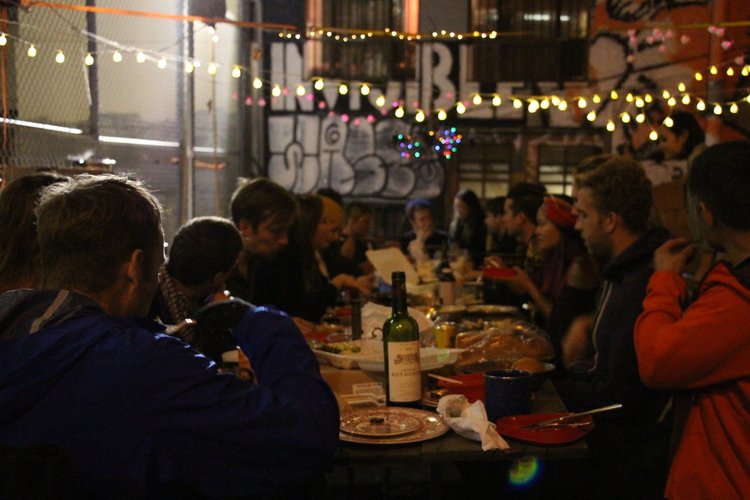


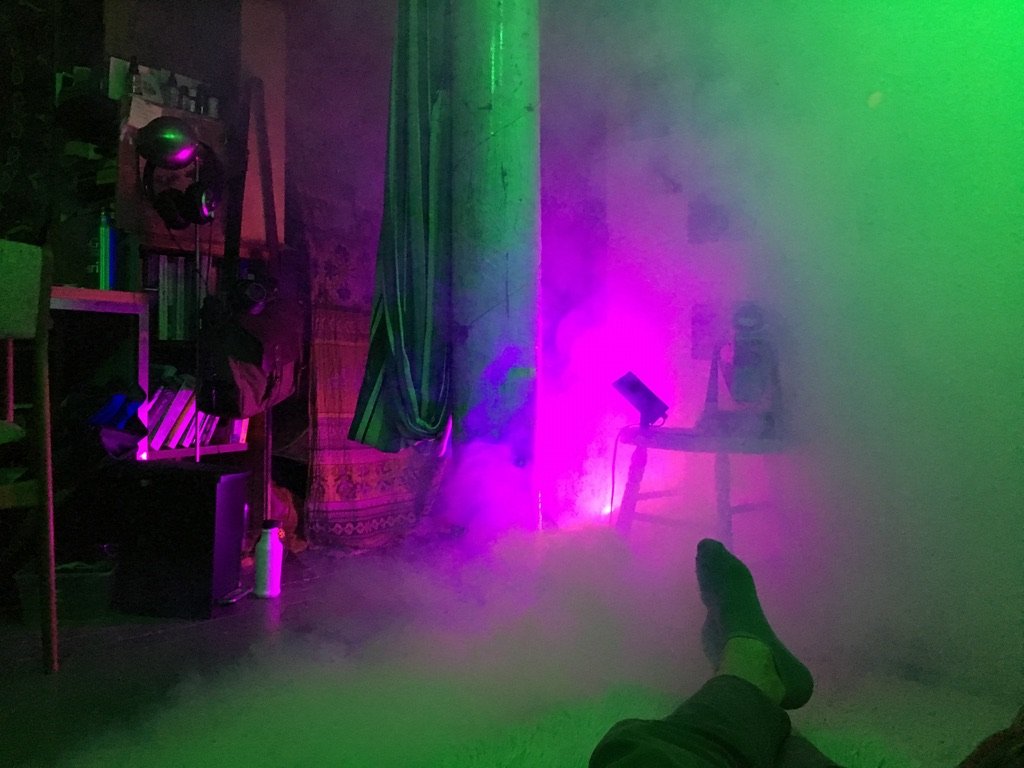
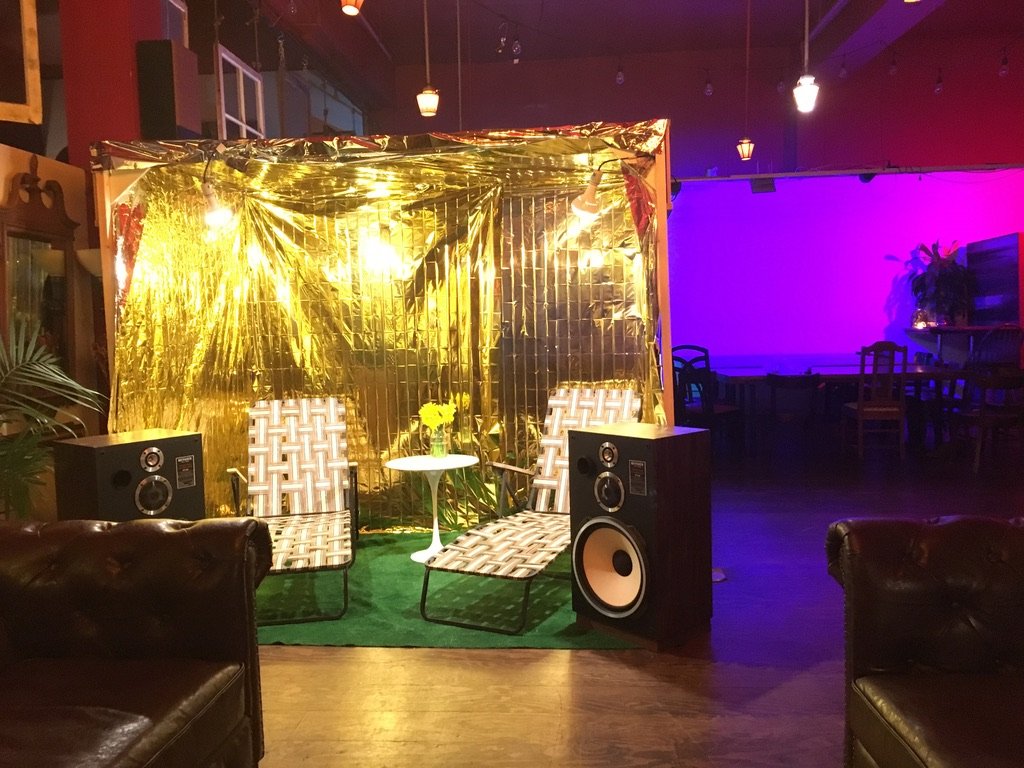
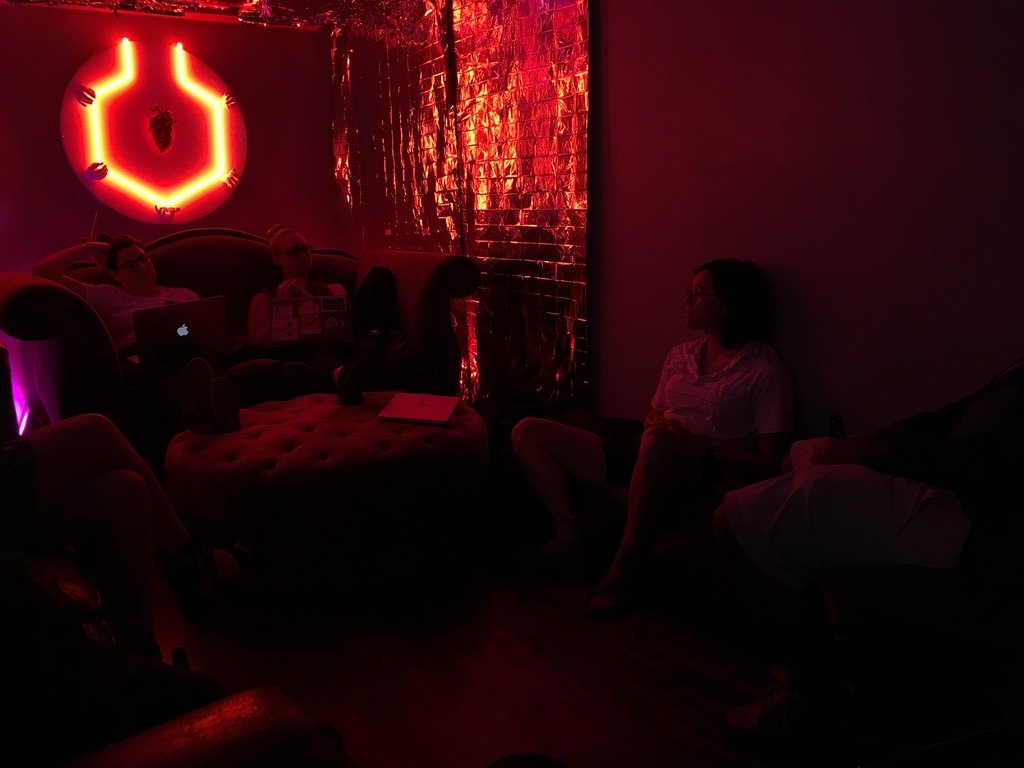

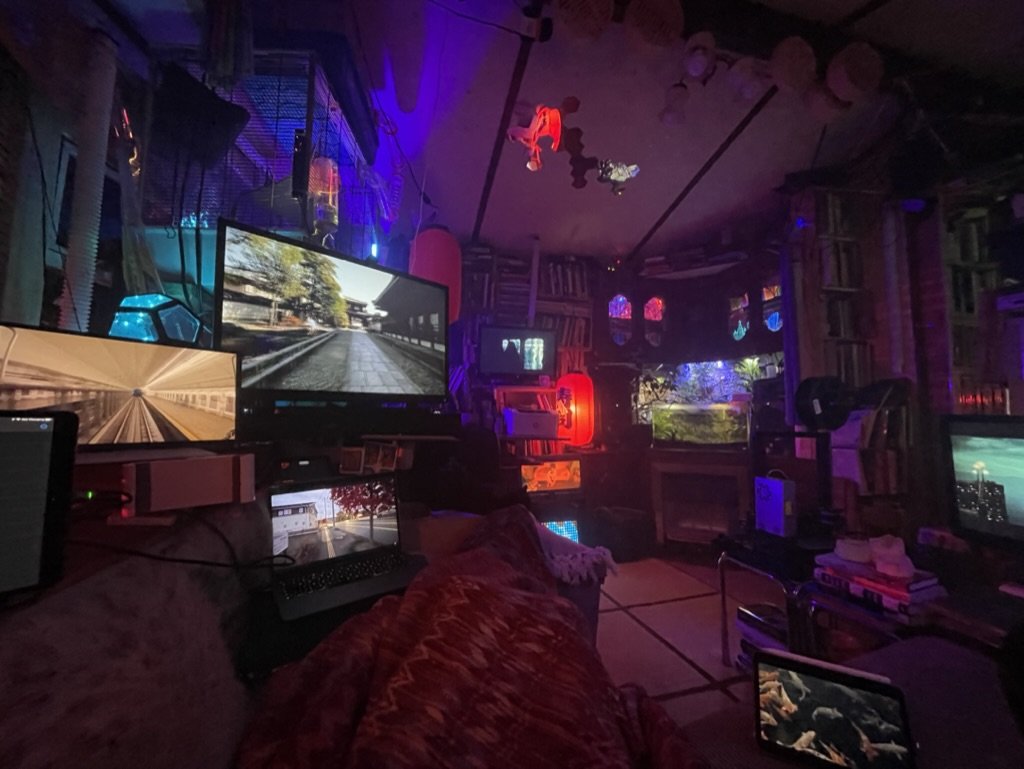
The Night Cafe is, of course, not the only late-night space in London. It sits, happily, within a constellation of nearby open-late and 24/7 spaces, including Polo Bar, Duck & Waffle, Sushi Samba, McDonald’s, and the rivalrous Biegel places on Brick Lane. But it is also unlike most late-night spaces. For one thing, it is neither a drunk food place, nor a bar. It is intended to cater to a more thoughtful, introspective nighttime culture, where people can move back and forth between being social and introverted. This is a major innovation in a city like London, where bars and pubs dominate the nighttime scene, and where rowdy drunkenness sets the timbre of public and commercial spaces. “We think nightlife should be about more than getting drunk and shouting over loud music,” out manifesto declares. “Nightlife should also make space for thoughtfulness and curiosity.”
The Night Cafe has numerous creative neighbors: Beau Beaus cafe, which is right around the corner, is a hub of culture and creativity, with its daytime cafe and music and chess nights in the evenings. Nearby, there is also the tattoo and fashion boutique Concrete.01—an epicenter of goth and rave tastemaking. And in nearby Spitalfields Market, there is Art Play--an art space that once occupied Night Cafe’s current home!
As the Night Cafe enters its second year, I am excited for it to continue to be a late-night “thirdspace”—a place that brings beauty and comfort and inspiration to a city that has many struggles, from affordability to inequality to increasing homogeneity in commercial offerings. I also hope that it can be a meeting place for changemakers, creatives, intellectuals, tastemakers and critical thinkers. We are already a home for a number of socials and subcultures; I look forward to hopefully continuing this trend—deepening our collaboration and partnerships with people and organizations who bring magic to this world. I am grateful to all of our guests, especially our regular guests, my friends and collaborators, and everyone who has supported the project in one way or another.


